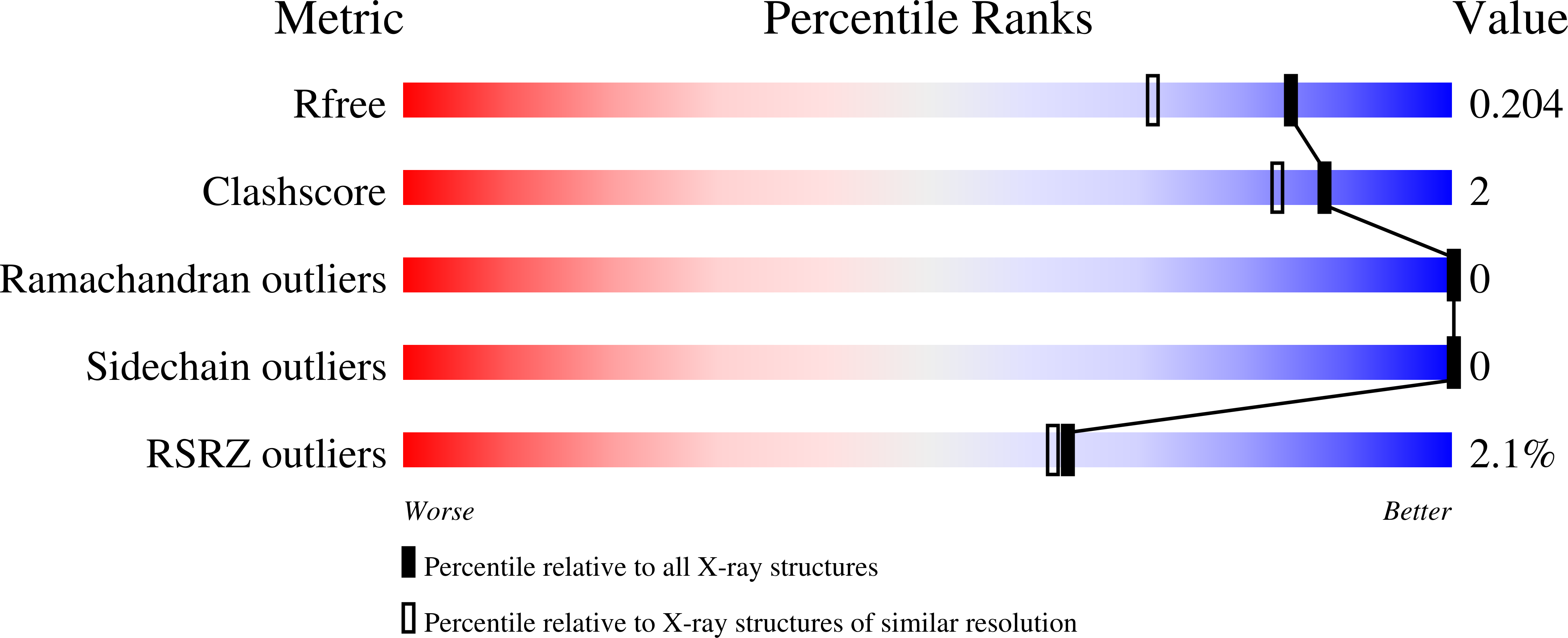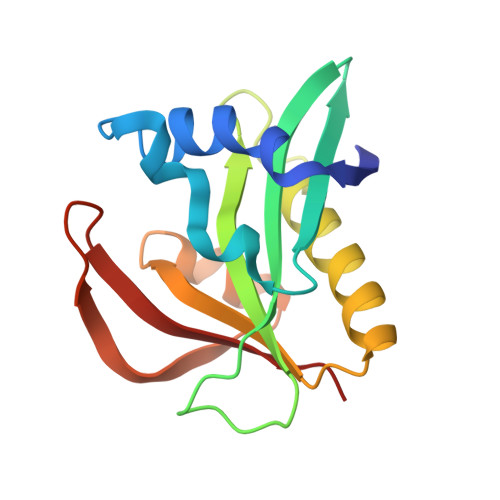The molecular basis of glyphosate resistance by an optimized microbial acetyltransferase.
Siehl, D.L., Castle, L.A., Gorton, R., Keenan, R.J.(2007) J Biol Chem 282: 11446-11455
- PubMed: 17272278
- DOI: https://doi.org/10.1074/jbc.M610267200
- Primary Citation of Related Structures:
2JDC, 2JDD - PubMed Abstract:
GAT is an N-acetyltransferase from Bacillus licheniformis that was optimized by gene shuffling for acetylation of the broad spectrum herbicide, glyphosate, forming the basis of a novel mechanism of glyphosate tolerance in transgenic plants (Castle, L. A., Siehl, D. L., Gorton, R., Patten, P. A., Chen, Y. H., Bertain, S., Cho, H. J., Duck, N., Wong, J., Liu, D., and Lassner, M. W. (2004) Science 304, 1151-1154). The 1.6-A resolution crystal structure of an optimized GAT variant in ternary complex with acetyl coenzyme A and a competitive inhibitor, 3-phosphoglyerate, defines GAT as a member of the GCN5-related family of N-acetyltransferases. Four active site residues (Arg-21, Arg-73, Arg-111, and His-138) contribute to a positively charged substrate-binding site that is conserved throughout the GAT subfamily. Structural and kinetic data suggest that His-138 functions as a catalytic base via substrate-assisted deprotonation of the glyphosate secondary amine, whereas another active site residue, Tyr-118, functions as a general acid. Although the physiological substrate is unknown, native GAT acetylates D-2-amino-3-phosphonopropionic acid with a kcat/Km of 1500 min-1 mM-1. Kinetic data show preferential binding of short analogs to native GAT and progressively better binding of longer analogs to optimized variants. Despite a 200-fold increase in kcat and a 5.4-fold decrease in Km for glyphosate, only 4 of the 21 substitutions present in R7 GAT lie in the active site. Single-site revertants constructed at these positions suggest that glyphosate binding is optimized through substitutions that increase the size of the substrate-binding site. The large improvement in kcat is likely because of the cooperative effects of additional substitutions located distal to the active site.
Organizational Affiliation:
Pioneer Hi-Bred International, Redwood City, California 94063, USA. [email protected]

















